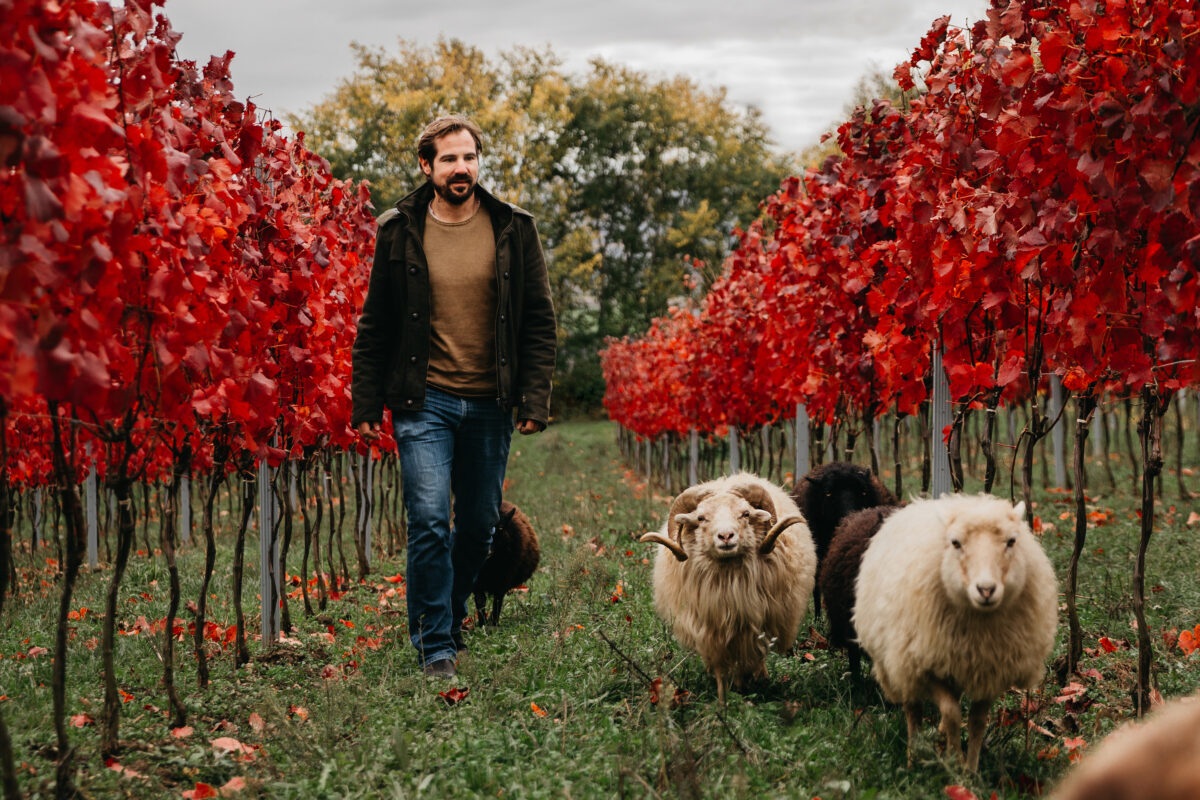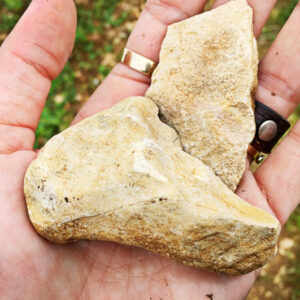“The lower the alcohol in my wines, the more I can see the terroir.” – Johannes Trapl
One acre. That Johannes Trapl could turn the meager half-hectare of vines his family had to offer him into one of Austria’s most exciting wine brands is a testament to his passion, work ethic, and talent. Along the way, he’s helping change the way Austria and the world perceive Carnuntum wines.
Growing up, Johannes’s family’s property was a small, mixed-agriculture farm. Wine played only a small role (that fateful half-hectare). But in his late teens, Johannes grasped the future that wine could have and decided to devote himself to that, attending viticultural college before heading out to Napa Valley for an internship. He performed so well in Napa that he was offered a full-time job as an assistant winemaker. But before deciding to move to California, he headed home to talk to his family, asking what they could offer to keep Johannes in Austria. They said they would give him control over that acre of vines, with which Johannes could do as he wished. He accepted and began, though it was hardly enough land with which to make a living, so Johannes also took a job with the newly established Muhr-van der Niepoort winery, a partnership that included the celebrated and innovative Portuguese winemaker Drew Niepoort, who would have a great influence on young Johannes. In 2004, Johannes expanded his holdings with an additional ten hectares and set about to make his name.
He wouldn’t have to wait long. His region, Carnuntum, was primarily known as a source of big, weighty, modern red wines from Zweigelt—a style that Johannes rejected. Through his work with Niepoort, Johannes got to know vineyards in the Spitzerberg, a somewhat forgotten old terroir on a rocky limestone ridge, just five miles from the border with Slovakia. Blaufränkisch, an often overlooked grape in Carnuntum, grew here, and Johannes contracted some grapes for his own brand. In a shocking turn of events, his first wine from 2004 won the title of varietal wine of the year from Falstaff, Austria’s most prestigious wine magazine. Since then and practically overnight, Trapl’s career has shot up like a rocket, and he has become a leader not only in his region, but in Austria, for naturally-made, fresh-styled wines of purity, character, and complexity.
Region, Geography, and Climate
Johannes Trapl’s region of Carnuntum is well-situated, evolving, and on the rise, in part to producers like him, which redefine how the world views these wines. An ancient region most famous for the vast archaeological site of the same name, Carnuntum was once a vast and thriving outpost of the Roman Empire. For over 400 years from this strategic location between the Alps and the Pannonian steppes, the Romans managed the trade, flow of information, and protection of the northeastern frontier of their empire, while at the same time developing the region’s agriculture, including wine.
Lying just to the east of Vienna and west of Bratislava, Slovakia on the south bank of the Danube, Carnuntum’s situation is auspicious for the grapevine too. One of the warmer and drier locales in Austria, Carnuntum is most famous for being a producer of serious red wines in a country largely dominated by whites ( though excellent white wines are also produced here).
The climate is continental and Central European, meaning that it is prone to hot, dry inland summers exacerbated at times by the famously sere and searing winds off the Pannonian Steps. Winters can be very cold, though not heavy in snow. However, proximity to two bodies of water—the shallow, but vast Lake Neudseidl and the Danube River—helps moderate extremes of temperature.
Carnuntum occupies a geological crossroads too, resulting in a potpourri of soil types: glacial advances and retreats have deposited gravel; rivers and ancient seabeds have left limestone, clay, and loams; schist, gneiss, and granite result from orogeny; and winds have deposited beds of loess.
Within his total of 15 or so hectares, Johannes deals with elements of all of these soils, with a range of grapes (20% white, 80% red), ranging from Grüner Veltliner to Zweigelt. However, his greatest legacy so far is his spearheading (along with his friends at the Muhr-van der Niepoort winery) the renaissance of the Spitzerberg, that forgotten (since the Hapsburg empire) terroir in the foothills of the Carpathian mountains. Its shallow limestone soils in combination with the under-appreciated Blaufränkisch yield wines of extraordinary nuance, and complexity that have an almost hidden power and longevity.
Viticulture and Winemaking
To understand Johannes’ approach to the vineyard, one need only glance at his website, which highlights photos of healthy vineyards teeming with life, interstitial rows teeming with cover crops, and a flock of sheep to handle the weeding. These tell the story of a man who is obsessed with cultivating living, healthy soils, vines, and wines. Indeed, Johannes’ holdings are all now Demeter-certified biodynamic and have been certified organic since 2010. Johnnes works resolutely with cover crops, biodynamic preparations, teas, and extracts. As much as he focuses on thriving vines, he puts even more energy into creating robust soils, which, he says “is the only way to preserve healthy vines for future generations and to counteract climate change.” Also, he notes that such living soils are the only way to diminish sulfur additions, unnecessary manipulation of the wines, and to prevent high alcohol, which is a particular scourge for him. “The lower the alcohol in my wines, the more I can see the terroir.”
Cover crops are assiduously cultivated—legumes, oats, and rye are all allowed to grow throughout the season, as well as various plants that attract bees. Ultimately, cover crop seeds are allowed to remain in the vineyard, so the cover crops return in the spring without having to be re-seeded.
Zweigelt, Baufränkisch, Grüner Veltliner, and Pinot Blanc are the major focus, trellised and cane-pruned, though some vines get spur pruning. Canopy management is a prime concern in the era of climate change, and much effort is put into keeping the fruit zone well-aerated and partially shaded. Vines are on average 45 years old, but some of the plants in the Spitzerberg are around 70. These live mostly in the hillside band between 170 and 190 meters above sea level, so altitude doesn’t play a major factor. Johannes attributes more impact on the wines to vine age and soil, as the gravel, loam soils of Stixneusiedl (the home vineyard) are more fertile than the shallow, limestone soils of the Spitzerberg.
Johannes’ philosophy in the cellar mirrors the vineyard—“no nonsense added.” All fermentations are spontaneous—in open wooden vats for the reds and both amphora and stainless steel tanks for his entry-level whites, which also receive some temperature control. Malo is not controlled, but typically all wines go through it. Lees are not usually stirred. Wines are neither fined nor filtered and receive only a minimal dosage of SO2 before bottling. Entry-level whites are bottled 5-7 months post-harvest, while all Blaufränkisch is put in bottle after 12 to 18 months, depending on the wine, and then rested an additional 4 to 5 months before release. Trapl wines do not fall within the Carnuntum appellation requirements, which, he says, “favor bold styles, and that is not our approach.”
















